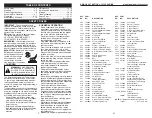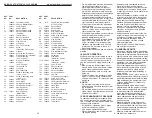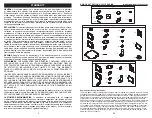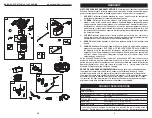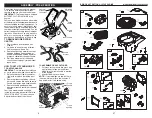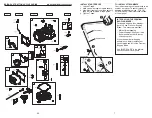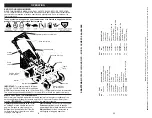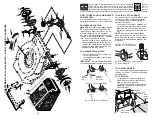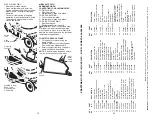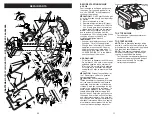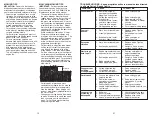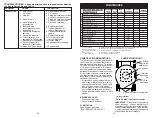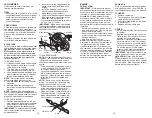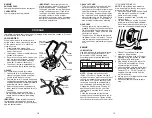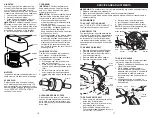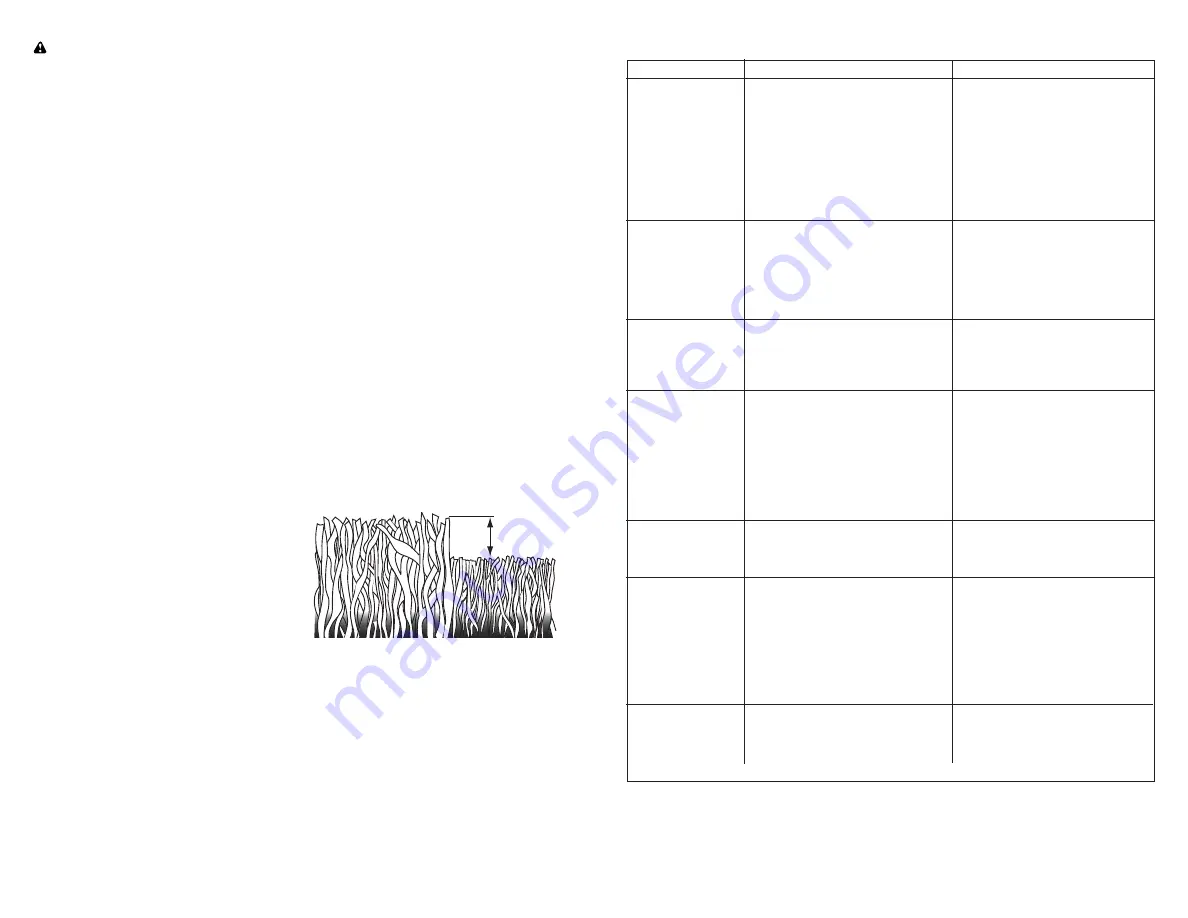
12
MULCHING MOWING TIPS
IMPORTANT
: For best performance,
keep mower housing free of built-up
grass and trash. See “CLEANING” in the
Maintenance section of this manual.
• The special mulching blade will recut
the grass clip pings many times and
reduce them in size so that as they fall
onto the lawn they will disperse into
the grass and not be noticed. Also, the
mulched grass will bio de grade quick ly to
provide nu tri ents for the lawn. Always
mulch with your highest engine (blade)
speed as this will provide the best recut-
ting action of the blades.
• Avoid cutting your lawn when it is wet.
Wet grass tends to form clumps and
in ter feres with the mulch ing action. The
best time to mow your lawn is the early
afternoon. At this time the grass has
dried, yet the newly cut area will not be
exposed to direct sunlight.
• For best results, adjust the lawn mower
cutting height so that the lawn mower
cuts off only the top one-third of the
grass blades. If the lawn is over grown
it will be nec es sary to raise the height of
cut to reduce pushing effort and to keep
from over load ing the engine and leaving
clumps of mulched grass. For ex tremely
heavy grass, reduce your width of cut
by overlapping previously cut path and
mow slowly.
• Certain types of grass and grass
con di tions may re quire that an area be
mulched a second time to com pletely
hide the clip pings. When doing a sec-
ond cut, mow across (perpendicular) to
the fi rst cut path.
• Change your cutting pattern from week
to week. Mow north to south one week
then change to east to west the next
week. This will help prevent matting
and graining of the lawn.
MAX 1/3
MOWING TIPS
CAUTION:
Do not use de-thatcher
blade attachments on your mower. Such
attachments are hazardous, will damage
your mower and could void your warranty.
• Under certain conditions, such as very
tall grass, it may be nec es sary to raise
the height of cut to reduce pushing effort
and to keep from overloading the engine
and leaving clumps of grass clippings.
It may also be necessary to re duce
ground speed and/or run the lawn
mower over the area a sec ond time.
• For extremely heavy cutting, re duce the
width of cut by over lap ping previously
cut path and mow slowly.
• For better grass bagging and most cut-
ting conditions, the engine speed should
be set in the FAST po si tion.
• Pores in cloth grass catchers can
become fi lled with dirt and dust with use
and catchers will collect less grass. To
prevent this, reg u lar ly hose catcher off
with water and let dry before using.
• Keep top of engine around starter clear
and clean of grass clippings and chaff.
This will help engine air fl ow and extend
engine life.
21
Loss of power
1. Rear of lawn mower
1. Raise cutting height.
housing or cutting blade
dragging in heavy grass.
2. Cutting too much grass.
2. Raise cutting height.
3. Dirty air fi lter.
3. Clean/replace air fi lter.
4. Buildup of grass, leaves,
4. Clean underside of mower
and trash under mower.
housing.
5. Too much oil in engine.
5. Check oil level.
6. Walking speed too fast.
6. Cut at slower walking speed.
Poor cut –
1. Worn, bent or loose blade.
1. Replace blade. Tighten
uneven
blade
bolt.
2. Wheel heights uneven.
2. Set all wheels at same
height.
3. Buildup of grass, leaves
3. Clean underside of
and trash under mower.
mower housing.
Excessive
1. Worn, bent or loose blade.
1. Replace blade. Tighten
vibration
blade
bolt.
2. Bent engine crankshaft.
2. Contact a Sears or other
qualifi
ed
service
centre.
Starter rope
1. Engine fl ywheel brake is on
1. Depress control bar to
hard to pull
when control bar is released.
upper handle before
pulling starter rope.
2. Bent engine crankshaft.
2. Contact a Sears or other
qualifi
ed
service
centre.
3. Blade adapter broken.
3. Replace blade adapter.
4. Blade dragging in grass.
4. Move lawn mower to cut
grass or to hard surface.
Grass catcher
1. Cutting height too low.
1. Raise cutting height.
not fi lling
2. Lift on blade worn off.
2. Replace blade.
(If so equipped)
3. Catcher not venting air.
3. Clean grass catcher.
Hard to push
1. Grass is too high or wheel
1. Raise cutting height.
height is too low.
2. Rear of lawn mower
2. Raise rear of lawn mower
housing or cutting blade
housing one (1) setting
dragging in grass.
higher.
3. Grass catcher too full.
3. Empty grass catcher.
4. Handle height position not
4. Adjust handle height to suit.
right for you.
Loss of drive
1. Belt wear.
1. Check/replace drive belt.
or slowing of
2. Belt off of pulley.
2. Check/reinstall drive belt.
drive speed
3. Drive cable worn or broken.
3. Replace drive cable.
4. “Loose” drive control system. 4. Adjust drive control.
PROBLEM CAUSE
CORRECTION
TROUBLESHOOTING - See appropriate section in manual unless directed
to a Sears Parts & Repair Centre.


